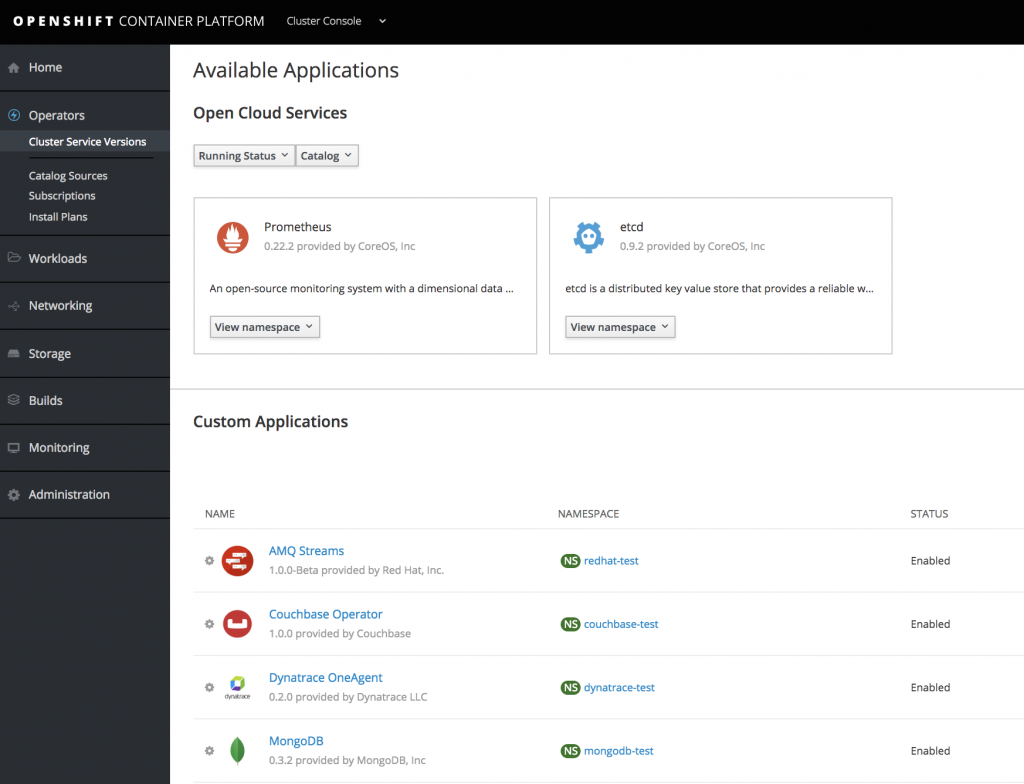Red Hat Expands Scope of OpenShift Platforms Based on Kubernetes
Red Hat today announced an update to its OpenShift application development platform based on Kubernetes that, for the first time, adds tools aimed at IT administrators rather than just developers.
Mike Barrett, director of product management for Red Hat, says the ability to support multiple personas stems from technologies that Red Hat gained via its acquisition of CoreOS, as well as advances delivered in the 1.11 release of Kubernetes.
To achieve that goal, Red Hat OpenShift 3.11 will ship with the traditional application console provided by Red Hat and the cluster console that comes with Kubernetes. Barrett notes that as Red Hat becomes more involved with IT organizations that have embraced DevOps practices, the need to have access to the Kubernetes cluster console has become more apparent.
 At the same time, Red Hat recognizes there are organizations that don’t necessarily want to deploy a highly opinionated instance of development platform designed by Red Hat. To address those customers Red Hat is also making available OpenShift Container Engine, an instance of Kubernetes that does not include many of the extended features of the more opinionated Red Hat OpenShift platform.
At the same time, Red Hat recognizes there are organizations that don’t necessarily want to deploy a highly opinionated instance of development platform designed by Red Hat. To address those customers Red Hat is also making available OpenShift Container Engine, an instance of Kubernetes that does not include many of the extended features of the more opinionated Red Hat OpenShift platform.
In addition, Red Hat is embracing several other Kubernetes technologies developed under the auspices of the Cloud Native Computing Foundation (CNCF), including Prometheus container monitoring software and Helm packaging software for deploying applications on a Kubernetes cluster.
With this release of OpenShift Red Hat is also adding support for open source Grafana data visualization dashboards developed by Grafana Labs, a fellow member of the CNCF. Those dashboards will provide DevOps teams with more visibility into how microservices are deployed across the Red Hat OpenShift platform, says Barrett.
Finally, Red Hat is expanding its support for the Operators management framework developed by CoreOS. In addition to instances of Operators software for deploying and managing Prometheus, etcd and AMQ Streams Operators software available in a preview mode, third-party instances of Operators are becoming available on the Red Hat OpenShift platform. Built using an Operators software development kit (SDK) provided by Red Hat, Operators are available in preview mode from dynatrace, MongoDB and Couchbase.
Red Hat is making it clear that it understands not every organization wants to transpose a framework originally developed for a platform-as-a-service (PaaS) environment to a container platform based on Kubernetes. For every organization that appreciates the structure a PaaS environment provides, there is another that chaffs at perceived limitations and restrictions. In many cases, development teams in the same organization can have radically different views concerning the appropriate level of abstraction an application development platform should provide.
Those same organizations can be just as divided about what role developers and administrators should play when it comes to managing DevOps environments. Some DevOps proponents contend developers should own the process end to end. Others argue IT administrators still have a critical role to play, if for no other reason than wanting their developers to focus more time and effort on developing code rather than managing infrastructure. Whatever approach chosen, Red Hat is increasingly staking out a neutral position in form of the platform options it provides.




